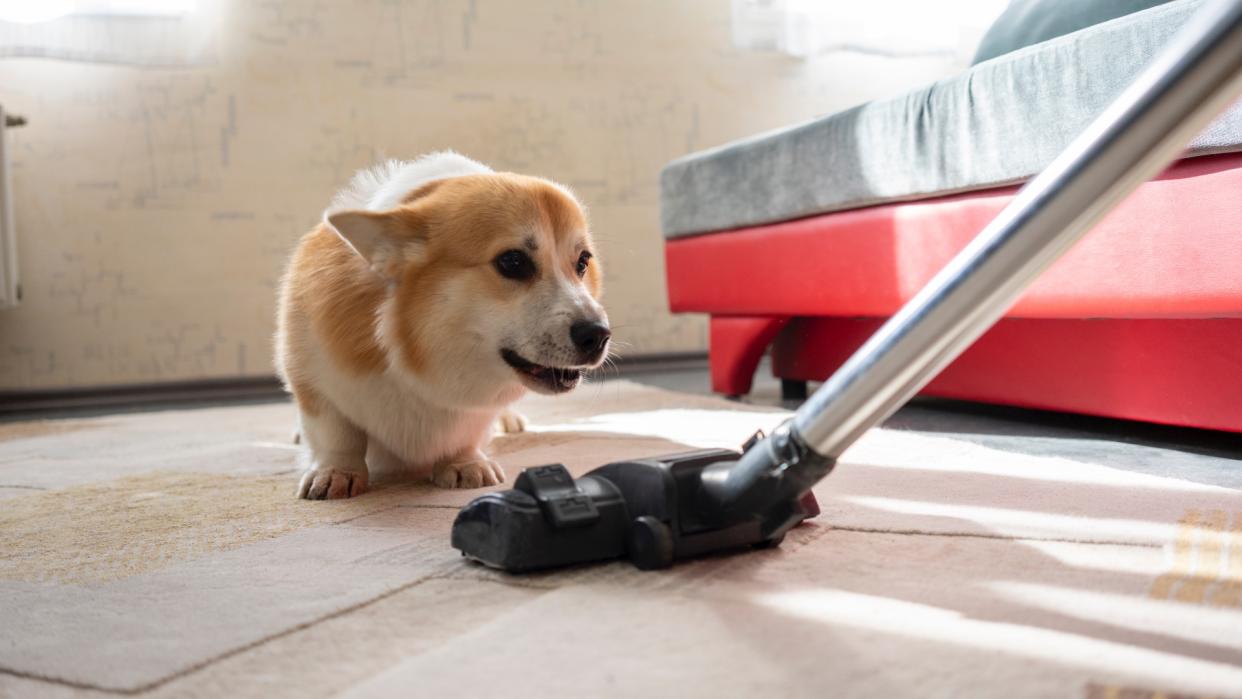Trainer shares clever tip to help your dog get used to the vacuum cleaner, and make spring cleaning a breeze

Emerging from winter often gifts us with a surge of energy that makes us want to spring clean the house in time for the arrival of better weather. But while most of us see it as one of those run-of-the-mill tasks that just has to be done, there are some members of our households who may not be so keen on participating in this job - and that's our dogs.
If you have a nervous pup, knowing how to calm a reactive dog can be super helpful. And yet for other dogs, it's not so much that they struggle with reactivity on a day-to-day basis and more that there are simply certain loud sounds they're not so keen on.
"It makes sense some dogs are scared of the vacuum. It’s weird looking and it makes a scary sound," says expert trainer Julianna DeWillems. To help you help your dog to feel calmer and more relaxed when the vacuum goes on, DeWillems has a great training tip which we outline in detail below.
A post shared by JW Dog Training & Behavior (@jwdogtraining)
A photo posted by on
"Helping your dog feel more comfortable with the vacuum is about giving them choice and not forcing interaction," DeWillems explains. With that in mind, she suggests following this easy process to help your dog get more accustomed to the vacuum cleaner.
"We first start with the vacuum turned off and we let our dog explore it as much as they need to," says DeWillems. "We pair tasty treats with the vacuum to create a positive association and proactively reduce any fear our dog might be experiencing."
The next step once you've gotten your dog comfortable with exploring the vacuum when it's not in use, is to turn it on.
"When we turn the vacuum on, we only run it for short periods of time," explains DeWillems. "We still use treats but we toss them away to encourage our dog to get some distance from the scary noise.
Once we feel our dog is comfortable, we reward them for making desirable choices while we're vacuuming." These choices might include lying or sitting quietly on the floor or couch.
"They certainly don't have to stay in these positions, in fact, we always make sure they have a way to get away from the vacuum - but, if they're comfortable enough to be here we might as well use it as an opportunity to shape behavior that works for everyone."
Just like learning how to stop a dog from jumping up or how to walk well on a loose leash takes time, patience and consistency, so too does helping your dog to adjust to loud sounds around the home. If you find you'd like some extra help in this area, we recommend reaching out to a professional trainer for advice and guidance.

